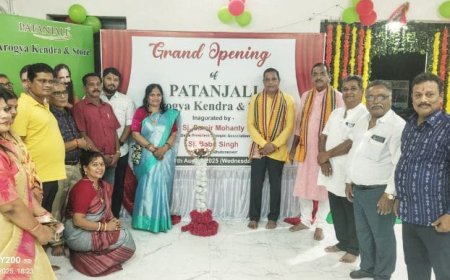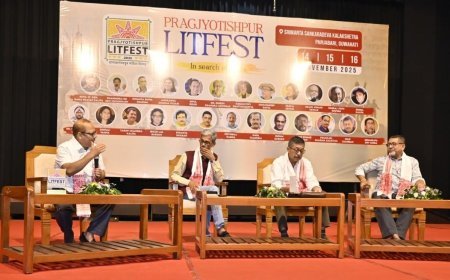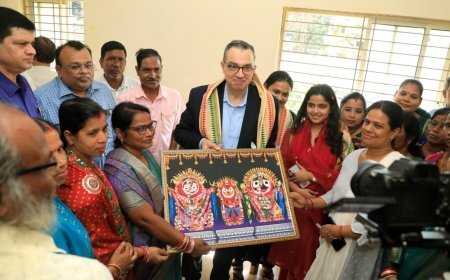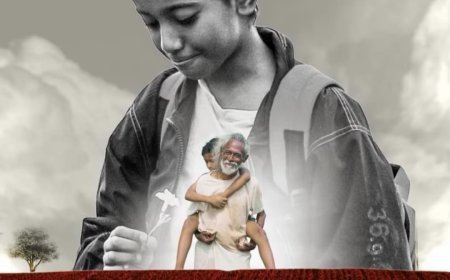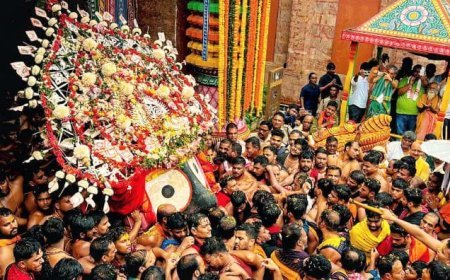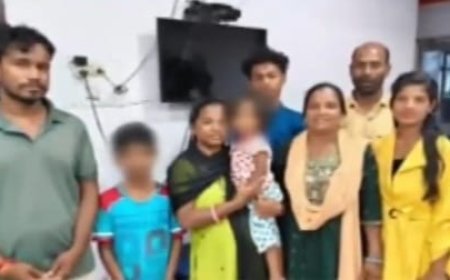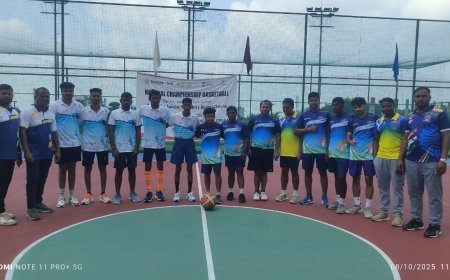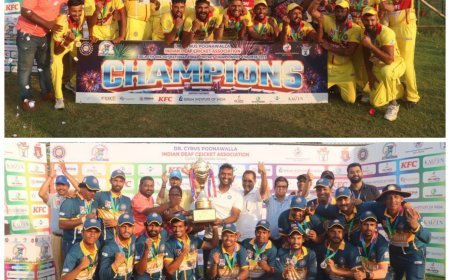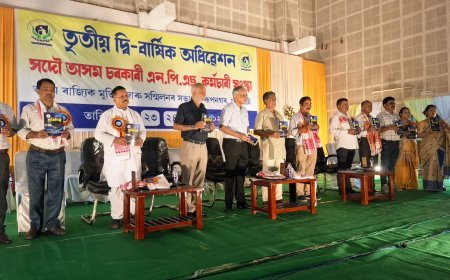The Future of Odisha’s Regional Parties
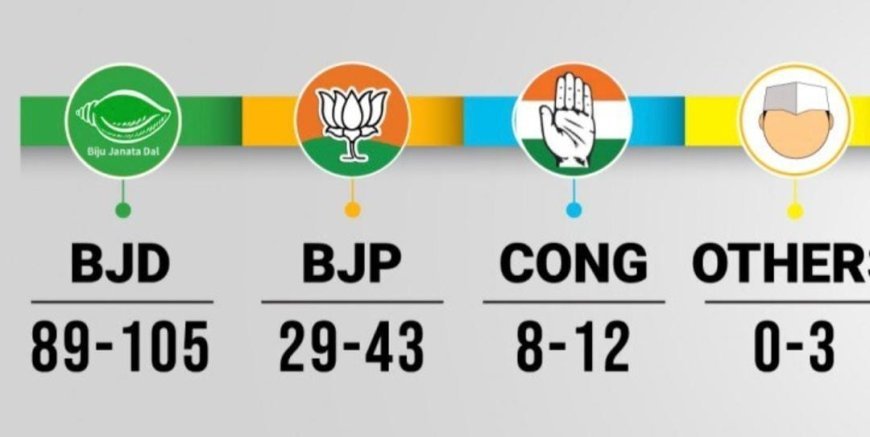
By |sashi Sekhar Samanta|
Odisha’s politics has stood out in India’s vast democratic landscape for one defining reason: the enduring strength of its regional parties. At a time when national parties increasingly dominate the political narrative across states, Odisha remains one of the few regions where homegrown political formations have shaped governance, identity, and aspirations for decades. But as India moves into an era shaped by digital influence, youth-driven politics, economic transitions, and sharper regional-national realignments, a pressing question emerges: What is the future of Odisha’s regional parties?
To understand the road ahead, one must first understand the legacy behind. For nearly a quarter century, the Biju Janata Dal (BJD) under Naveen Patnaik’s leadership defined governance in Odisha through a model blending welfare schemes, administrative discipline, and disaster management excellence. Its dominance created political stability and a sense of predictable governance. Yet, the 2024 political shift—marking the end of a BJD-led era—signaled not only a change of government but the beginning of a new chapter for Odisha’s political identity.
Today, Odisha’s political landscape is undergoing rebalancing. National parties like the Bharatiya Janata Party (BJP) and the Indian National Congress are rebuilding their grassroots presence, while regional parties confront existential debates: their relevance, their internal leadership, their ideological clarity, and their capacity to innovate.
The central question remains—do regional parties still hold a compelling future in Odisha? The answer, while complex, leans toward yes, but with significant conditions.
The Historical Strength of Odisha’s Regionalism : Odisha’s preference for regional parties has deep roots. The state has long nurtured a sense of cultural uniqueness—rooted in Jagannath tradition, Odia linguistic pride, tribal diversity, and a resilient socio-economic landscape. Regional parties, unlike national ones, have traditionally positioned themselves as champions of Odisha’s distinct needs—fighting for coastal protection, disaster relief, mining rights, and equitable central support.
Leaders like Biju Patnaik and later Naveen Patnaik embodied this regional spirit with a narrative centered on Odisha’s dignity and development. This identity-based approach, supported by efficient welfare delivery, gave regional parties a political edge that national parties struggled to counter.
But as new generations step into the political arena, the foundations of this regional sentiment face new pressures.
A Changing Electorate: New Aspirations, New Questions, Odisha’s youth demographic—educated, digitally active, and aspirational—no longer views politics solely through the lens of regional pride. Their priorities include employment, technology-driven governance, global exposure, and entrepreneurship. For them, political appeal depends less on cultural symbolism and more on strong economic futures.
This generational shift poses both a challenge and an opportunity for Odisha’s regional parties. If they adapt to this new mindset—focusing on innovation, job creation, skill development, and digital governance—they can retain relevance. If they fail, national parties with stronger organizational machinery and broader policy offerings may dominate.
The BJD’s Critical Crossroads: No discussion about regional parties in Odisha can begin without acknowledging the pivotal role of the BJD. After ruling for 24 uninterrupted years, the party faces a phase of introspection. Naveen Patnaik’s charisma and governance style defined the party’s identity. But with a leadership vacuum emerging and the organisational structure in flux, the party must now reinvent itself—rapidly and decisively.
For BJD’s revival and future relevance, several pathways are critical: The party must cultivate a new set of leaders who can connect with young voters, articulate fresh ideas, and carry forward the legacy. Leadership cannot remain abstract; it must be visible, accessible, and credible. For years, the BJD functioned through a top-down structure. Today’s political battleground demands grassroot engagement, booth-level energy, and data-driven strategy. A modern, agile organisation is essential. Welfare schemes alone may not be enough in the next decade. The BJD must articulate a future-forward vision focusing on industrial growth, technological progress, and global positioning. The next electoral cycles will be fought on social media, community engagement, and data strategy. The party must strengthen its digital ecosystem to compete effectively. If the BJD embraces change rather than resisting it, it can reclaim its position as a powerful regional force.
Smaller Regional Players: A Space for Emergence, Not Decline, Odisha has historically seen smaller regional formations rise and fall—whether based on tribal identity, local grievances, or leadership charisma. While many of these outfits faded due to limited reach or political fragmentation, the future may create new opportunities for such players, especially in:
Tribal districts seeking stronger representation, Coastal communities concerned about climate change ,Mining belts affected by displacement ,Agrarian areas seeking fairer economic support .
If smaller regional parties focus on specific issues—environmental justice, tribal rights, fishermen’s rights, rural distress—they could carve niche political spaces. In the age of identity politics, authenticity matters, and local issues can generate powerful movements.
National Parties: The Dual Challenge to Regional Dominance
Two national parties will shape Odisha’s political future in significant ways:
The BJP : Having secured a strong foothold in Odisha, the BJP is aggressively expanding its cadre base, cultural influence, and ideological presence. Its focus on central welfare schemes, national identity narratives, and infrastructure promises appeals to a growing segment of Odisha’s youth and middle class. The more the BJP grows, the more pressure regional parties face.
The Congress: Although weakened, the Congress retains legacy goodwill in many pockets, especially among older voters. If it restructures effectively and forms strategic alliances, it could revive its influence—potentially reshaping the space available to regional parties.
Where Do Regional Parties Go from Here? A Vision for the Future
For Odisha’s regional parties to remain relevant, they must commit to a transformational journey—not just political, but philosophical and organisational. Their future will be defined by how well they adapt to the new realities of Indian democracy.
Here are essential strategies they must embrace: Issue-Based Politics Over Personality-Based Politics, Future voters seek solutions, not slogans. Parties must present detailed, data-backed plans on unemployment, health infrastructure, climate resilience, resource management, and rural economy.
High-Tech Campaigning and Transparency, AI-driven political communication, real-time fact-checking, and digital transparency will be non-negotiable. Regional parties must modernize their political machinery.
Coalition Building and Regional Alliances, In an era of national political consolidation, regional parties across India are learning that survival often depends on strategic alliances. Odisha’s parties may need to collaborate—whether issue-based or electoral.
Strong Internal Democracy,Parties with closed structures lose momentum. Odisha’s regional parties must encourage internal elections, leadership rotation, women’s representation, and youth inclusion.
Cultural Reassertion with Modern Flavor, Jagannath culture, Odia literature, classical arts, tribal heritage, and local festivals remain powerful emotional anchors. Regional parties should integrate cultural pride with futuristic aspirations.
A Political Landscape in Reinvention, Odisha’s political future is not a simple contest between national and regional parties; it is a deeper struggle over identity, aspiration, and direction. Regional parties will remain relevant so long as Odisha believes in its own distinct socio-cultural trajectory. But relevance is not automatic—it must be earned.
If Odisha’s regional parties reinvent themselves with courage, clarity, and creativity, they can continue shaping the destiny of the state. If they cling to old formulas, they risk fading into history. The future of Odisha’s regional parties will ultimately reflect the future of Odisha itself—a future built on pride, resilience, adaptation, and ambition.
Odisha stands at a political crossroads. The choices made today will define its political soul for decades to come.








